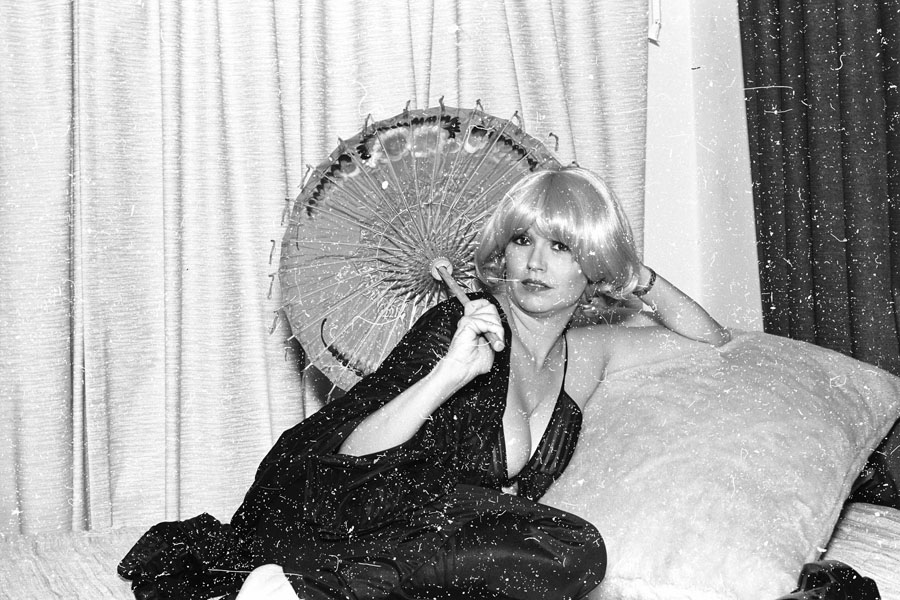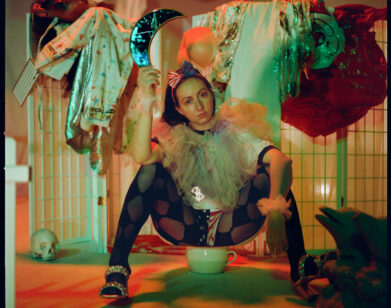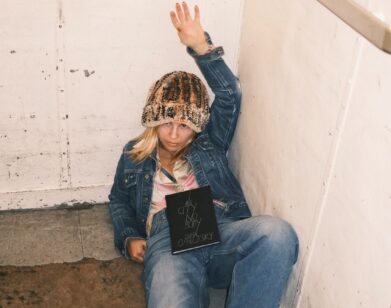Zoe Crosher Is Disappearing, Everywhere
An image is more durable now than ever before. You can’t burn the negatives of the digital photos from the debauched bachelor party, and now, you’ve been tagged in them. Zoe Crosher confronts this permanence in “ZOE CROSHER: THE DISAPPEARING OF MICHELLE DUBOIS” at Perry Rubenstein’s new Hollywood gallery (Sept. 13–Oct. 27).
“I talk about Michelle duBois as a kind of Facebook before Facebook,” Crosher told Interview via phone, a week before the opening. She refers to the fact that duBois, a call girl/flight attendant who worked in the Pacific Rim in the ’70s and ’80s (“She is a real person,” says Crosher. “Michelle duBois is one of the five aliases she used”), documented herself with an intensity more suited to a Me Generation exhibitionist. Crosher calls duBois’s practice “the Kodak amateur fantasy,” explaining the posed beauty shots duBois took of herself, the glamorous liberated figure she seemed to want to bequeath to the world, with Crosher as the conduit—the social media platform, if you will.
Much of Crosher’s work involves digging through, enlarging, and altering the extensive photographic archives of duBois, coaxing the viewer to try to draw conclusions upon the work. A tenet of Crosher’s work is the exposing of the failures in trying to do so; the fallacy of piecing information together from sets of photographs is like patching together someone’s life via their social media timeline.
Instead of being buried in the overwhelming flood of Internet avatars, Michelle duBois has been immortalized in a succession of four editioned books published by Aperture and several shows of different interpretations. Crosher will conclude the work in the show at Perry Rubenstein by re-photographing, scanning, reinterpreting and re-organizing the archives into clusters, hung on the walls to create an untenable narrative. For instance, in “Obfuscated,” a series that emerged around 2009, Crosher presents images in which duBois is blocked out either by low light, faults in the photographic process, or an object in the frame.
Confusion has followed the project everywhere since the inception. Who exactly is Michelle duBois? What are the intentions behind her chameleonic masquerading as Mae West? Crosher titled that particular cluster “The Cindy-Shermanesque, But She’s The Real Thing” (2005). “Everybody’s always wondering: who’s taking the photo?” says Crosher. “It doesn’t really matter.”
“What we’re dealing with is the end of analogue, and the meaning of what it is to be the digital world,” says gallerist Perry Rubenstein. “[Crosher] has the benefit, luxury, and burden of dealing with it in the archives, because it embodies the entire arc. In doing so, she’s able to extract patterns that identify and reflect upon this broad, underlying issue.”







